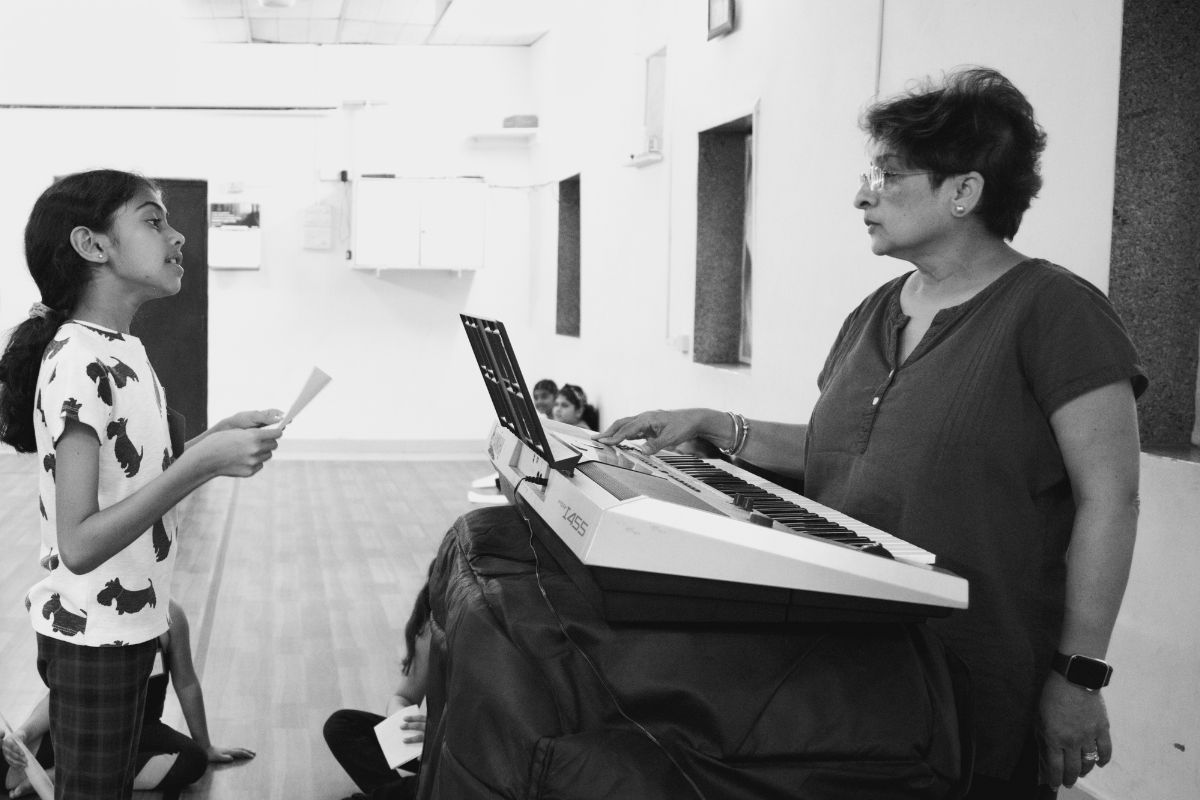Vocal Technique & Tips:
Understanding Vibrato vs. Straight Tone
Understanding Vibrato vs. Straight Tone
Music lovers have enjoyed listening to artists like Celine Dione, Whitney Houston, and Lady Gaga in Pop music, and Rene Fleming, and Luciano Pavarotti in Classical and Opera for their power packed vocals. A closer study of the technical aspects of their singing styles reveals their mastery over vibrato in their performances.
Vibrato, derived from the Italian word “vibrare,” meaning “to vibrate”, is characterized by a subtle, rapid oscillation of pitch within a sustained note. It adds warmth and expression to singing, especially in classical and theatrical contexts. It contrasts with the stable pitch of a straight tone, enriching the musical experience. Both voices and instruments can produce vibrato, influenced by the pitch variation and the speed of the oscillation, allowing singers to evoke different moods depending on the piece.
Types of Vibrato in Music
- Arm Vibrato: String instruments involve vibrato using the movement of the arm and wrist.
- Hand Vibrato: Woodwind instruments use the method for finer control through hand and finger movements.
- Diaphragmatic Vibrato: Typical in vocalists and brass players, this is generated by controlled fluctuations in breath support.
- Bowed Vibrato: String players achieve vibrato when the bow moves back and forth, slightly altering the pitch.
- Trill Vibrato: This combines rapid alternation between two notes with a vibrato effect, often used for embellishment in performances.


Developing Vibrato
Singers develop vibrato using various techniques like the following:
- Breathe Control: Deep breathing ensures a smooth, steady airflow for a sustained vibrato.
- Relaxation:
Incorporate relaxation techniques in your routine to create a fluid motion. Tension can hinder vibrato. - Slow Practice: As you begin with a slow tempo build control, gradually increasing speed as you gain confidence.
- Pitch Variation: Work on oscillating between pitches slightly above and below a target note to enhance flexibility.
- Regular Exercises: Vibrato exercises like lip thrills in your practice routine help develop muscle memory.
The ideal method to control vibrato is through developing consistency through a steady vibrato speed with width. Analyze performances by skilled musicians to understand their use vibrato for emotional impact. Record your practice sessions to assess your vibrato and pinpoint areas for improvement. Different musical genres may require distinct vibrato styles; adapt your technique accordingly.
Types of Vibrato
01. DELAYED VIBRATO
Delayed vibrato involves sustaining a pitch with a straight note before introducing vibrato. This technique creates a clear pitch that transitions into expressive modulation, producing a distinct emotional effect.
Characteristics:
- Initial Clarity: The stable pitch establishes a strong foundation before vibrato begins.
- Gradual Introduction: Vibrato is introduced slowly, giving the listener time to absorb the initial tone.
- Expressive Transition: This technique adds drama and nuance, enhancing the impact of the shift from straight tone to vibrato.
0
How to Develop Delayed Vibrato:
- Start with a Straight Tone: Hold a note steadily for a few seconds to establish clarity.
- Introduce Vibrato: Gradually incorporate vibrato, starting with a subtle oscillation and increasing the intensity over time.
- Control the Timing: Experiment with how long to hold the straight tone before initiating vibrato, trying different durations for varied effects.
- Practice with Different Pitches: Use various notes to develop versatility and observe how the technique feels across your range.
- Use a Metronome: Incorporate a metronome to maintain a consistent rhythm and timing for your vibrato.
Applications of Delayed Vibrato:
- Expressive Phrasing: Emphasize emotional moments in a piece, drawing attention to key phrases or transitions.
- Stylistic Choices: Particularly effective in classical, jazz, and lyrical singing, where nuance plays a crucial role.
- Dynamic Contrast: This technique can create contrast in dynamics, making the vibrato more noticeable and engaging.
02. SLIDING VIBRATO
Sliding vibrato combines vibrato with a glissando, (a rapid series of ascending or descending notes on the musical scale) allowing the note to gradually slide between pitches. This technique is used in classical, jazz, and contemporary genres for its fluid and expressive qualities.
Characteristics:
- Pitch Movement: Unlike traditional vibrato, which stays around a fixed pitch, sliding vibrato involves a smooth transition between notes or pitches.
- Expressive Quality: The sliding element adds a unique emotional layer, enhancing the overall expressiveness of the performance.
- Varied Width and Speed: The width and speed of the slide can vary, offering a broad range of expressive possibilities.
How to Develop Sliding Vibrato:
- Basic Glissando Practice: Start by practicing smooth transitions between two pitches, focusing on maintaining a steady hand or finger position for a clean slide.
- Integrate Vibrato: Once comfortable with glissando, gradually add a slight oscillation to the slide, starting with a narrow vibrato and increasing its width as you build confidence.
- Control Timing: Experiment with how long you can hold the pitch before sliding and the speed of the slide to find the right expressive quality for different contexts.
- Use a Tuner: It ensures accuracy in your slides and maintains pitch control throughout the technique.
Applications of Sliding Vibrato:
- Emotional Expression: Particularly effective for conveying feelings like longing or yearning in melodic lines.
- Stylistic Versatility: Useful across various styles, from classical to blues and pop, making it a versatile tool for musicians.
- Improvisation: In genres like jazz, sliding vibrato adds a personal touch to improvisations, allowing musicians to explore their unique sound.
Straight Tone vs. Vibrato
A straight tone is an unwavering pitch used in genres like classical and opera. It provides clarity and precision in singing, serving as an essential foundation before adding vibrato. It allows for a clear expression of pitch, while vibrato introduces emotional depth and engagement, enriching the overall sound.
By mastering the nuances of vibrato and understanding its contrast with straight tone, singers can enhance their expressive capabilities and connect more deeply with their audience.
–
Read more about Unleashing Your Best Performance in our earlier Blogs.

